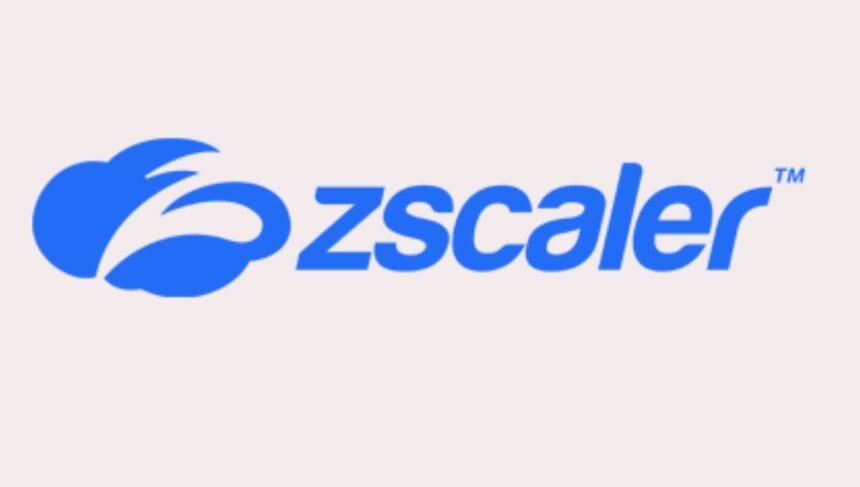Investing in stocks can be a rollercoaster ride, but selecting the right stock can yield significant returns over time.
Zscaler Inc. (NASDAQ: ZS) has been one of the prominent players in the cybersecurity space, and its stock performance over the past five years is a testament to its growth and market confidence.
This article delves into a detailed analysis of Zscaler’s financial performance and stock price evolution to determine how much a $10,000 investment made five years ago would be worth today.
Initial Investment and Stock Performance
On June 7, 2019, Zscaler’s stock price was $75.51. By June 4, 2024, the stock price had appreciated to $169.14. To calculate the value of the investment, we first determine the number of shares purchased and then assess the growth in value.
On June 7, 2019, Zscaler Inc’s stock closed at $75.51 per share. If you had invested $10,000 at that time, you would have been able to purchase approximately 132 shares (assuming no transaction fees).
Fast forward to June 4, 2024, and Zscaler’s stock price closed at $169.14 per share. With your initial investment of 132 shares, your holdings would now be worth $22,327 (132 shares × $169.14).
This impressive growth represents a staggering 123.27% return on your initial $10,000 investment over the five-year period. In other words, your investment more than doubled in value, showcasing the potential of investing in a promising and rapidly growing company like Zscaler.
Thus, a $10,000 investment in Zscaler Inc. on June 7, 2019, would be worth $22,389.56 on June 4, 2024, yielding a return of approximately 123.27%.
Zscaler Investment Calculator
Financial Performance Analysis
To understand this impressive growth, it’s crucial to analyze the compan financial statements, focusing on their income statement, balance sheet, and cash flow over the past five years.
Income Statement Highlights
From the income statements provided:
- Total Revenue Growth:
- 2019: $431.27 million
- 2020: $673.10 million
- 2021: $1,090.95 million
- 2022: $1,616.95 million
- 2023: $2,055.22 million (estimated)
This shows a consistent increase in revenue, indicating robust demand and successful business expansion.
- Gross Profit:
- 2019: $335.54 million
- 2020: $522.78 million
- 2021: $848.66 million
- 2022: $1,254.12 million
- 2023: $1,611.70 million (estimated)
The gross profit margin has remained strong, averaging around 77.5%, which signifies efficient cost management relative to revenue generation.
- Operating Income and Net Income:
- Despite the strong revenue growth, Zscaler has reported negative operating income and net income, reflecting high expenditures in R&D and SG&A. However, these investments are essential for growth in a competitive industry like cybersecurity.
Balance Sheet Highlights
- Total Assets:
- 2019: $1,833.46 million
- 2020: $2,257.63 million
- 2021: $2,832.67 million
- 2022: $3,608.32 million
- Total Liabilities:
- 2019: $1,348.63 million
- 2020: $1,728.74 million
- 2021: $2,259.37 million
- 2022: $2,883.21 million
- Stockholders’ Equity:
- 2019: $484.83 million
- 2020: $528.90 million
- 2021: $573.30 million
- 2022: $725.11 million
Zscaler’s asset base has significantly increased, driven by growth in cash equivalents and short-term investments. This increase in assets is primarily funded through equity rather than debt, indicating a strong balance sheet with significant liquidity.
Cash Flow Analysis
- Operating Cash Flow:
- 2019: $79.32 million
- 2020: $202.04 million
- 2021: $321.91 million
- 2022: $462.34 million
Positive and growing operating cash flow highlights Zscaler’s ability to generate cash from its core business activities, which is crucial for sustainability and future investments.
- Investing Cash Flow:
- Investments in capital expenditures and other investing activities show that Zscaler is actively investing in its growth and expansion. While the net cash flow from investing activities has fluctuated, it generally reflects a strategy of reinvesting profits for future growth.
- Financing Cash Flow:
- Zscaler has utilized equity financing to raise funds, as seen in the positive cash flows from financing activities. This has been instrumental in maintaining liquidity and supporting expansion without heavily relying on debt.
Earnings Forecast and Market Performance
Earnings Per Share (EPS) Forecast
According to the earnings forecast data, Zscaler is expected to see improved EPS performance in the coming years:
- Fiscal Year 2024: EPS forecast is -$0.76
- Fiscal Year 2025: EPS forecast is -$0.67
- Fiscal Year 2026: EPS forecast ranges from -$0.68 to $0.38
This trend indicates an expected move towards profitability, which could further enhance investor confidence and stock performance.
Market Performance and Historical Stock Data
Analyzing Zscaler’s historical stock data provides insights into its market performance and investor sentiment:
- 2019: Opening price $39.81, closing price $46.50
- 2020: Opening price $47.33, closing price $199.71
- 2021: Opening price $196.09, closing price $321.33
- 2022: Opening price $301.83, closing price $111.90
- 2023: Opening price $110.19, closing price $221.56
The significant price jumps, especially in 2020 and 2021, reflect the market’s strong response to Zscaler’s growth prospects and operational performance.
The dip in 2022 followed by recovery in 2023 suggests volatility, likely influenced by broader market conditions and sector-specific challenges.
Key Factors Driving Zscaler’s Growth
Several factors have contributed to Zscaler’s robust stock performance over the past five years:
- Increased Demand for Cybersecurity:
- The growing need for robust cybersecurity solutions in an increasingly digital world has driven demand for Zscaler’s services.
- Innovation and R&D Investment:
- High investments in research and development have kept Zscaler at the forefront of cybersecurity technology, enhancing its product offerings and market position.
- Strategic Acquisitions and Partnerships:
- Zscaler has engaged in strategic acquisitions and partnerships, expanding its market reach and enhancing its technology stack.
Risks and Considerations
While Zscaler’s growth trajectory has been impressive, it’s important to consider potential risks and challenges that could impact the company’s future performance and stock price:
- Intense Competition: The cloud security market is highly competitive, with established players like Palo Alto Networks, Cisco, and Fortinet, as well as emerging startups, vying for market share. Zscaler’s ability to maintain its competitive edge and differentiate its offerings will be crucial.
- Cybersecurity Landscape Evolution: The cybersecurity landscape is constantly evolving, with new threats and attack vectors emerging regularly. Zscaler must continue to invest in research and development to stay ahead of these threats and maintain the effectiveness of its security solutions.
- Customer Concentration: While Zscaler has a diverse customer base, a significant portion of its revenue is derived from a relatively small number of large customers. Any loss or reduction in business from these key customers could have a material impact on the company’s financial performance.
- Regulatory and Compliance Risks: As a provider of cybersecurity solutions, Zscaler must comply with various data privacy and security regulations across multiple jurisdictions. Any failure to meet these regulatory requirements could result in fines, penalties, and reputational damage.
- Valuation Concerns: Like many high-growth technology companies, Zscaler’s stock has traded at premium valuations, which could make it vulnerable to market corrections or shifts in investor sentiment.
Conclusion
If you had invested $10,000 in Zscaler Inc five years ago, your investment would now be worth approximately $22,327, representing a remarkable 123.27% return.
This impressive growth can be attributed to Zscaler’s innovative cloud security solutions, strong financial performance, and strategic positioning in the rapidly growing cybersecurity market.
However, it’s essential to consider the potential risks and challenges that the company may face, such as intense competition, evolving cybersecurity threats, customer concentration, regulatory compliance, and valuation concerns.
Investing in high-growth companies like Zscaler requires a long-term perspective and a thorough understanding of the company’s business model, competitive landscape, and industry trends.
While past performance is no guarantee of future results, Zscaler’s track record and market position suggest that the company could continue to capitalize on the increasing demand for cloud security solutions and deliver value to its shareholders.
Regardless of your investment decisions, it’s crucial to conduct your own research, seek professional advice if necessary, and develop a well-diversified investment portfolio aligned with your risk tolerance and financial goals.





